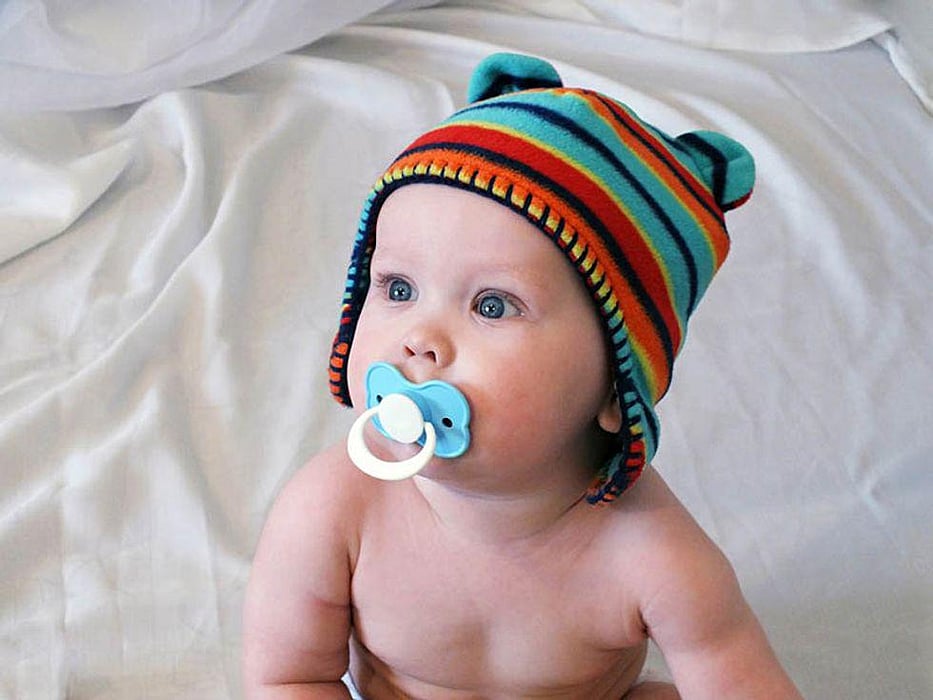Intervening in Infancy Might Help Prevent Some Cases of Autism: Study

WEDNESDAY, Sept. 22, 2021 (HealthDay News) -- Infants may show early signs of autism, but a diagnosis usually isn't made until age 3. Now, a new study suggests that jumpstarting therapy might stave off that diagnosis altogether.
Researchers say their preemptive, parent-led intervention could have a significant impact on children's social development and longer-term disabilities.
"What we found is that the babies who received our therapy had reduced behaviors that we use to diagnose autism. And, in fact, the therapy was so effective in supporting their development, that the babies who had received the therapy were less likely to meet clinical criteria for autism," said study author Andrew Whitehouse. He's a professor of autism research at Telethon Kids Institute and the University of Western Australia.
The four-year randomized trial, supervised by Telethon Kids, included 104 babies in Australia, ages 9 months to 14 months. Most were followed to age 3. All had shown behavioral signs of autism, which can include reduced eye contact and less gesturing communication.
Half the participants received the typical autism therapies. The other half received a 10-session intervention using video feedback, which records the parents with the infant, so parents can watch it later and observe how their baby communicates. Both groups went through the sessions for five months.
By the time the children were 3, when a diagnosis could be made, researchers found that autism was one-third as likely in children who had received the new therapy, with 7% meeting the criteria for an autism diagnosis in the intervention group compared to 21% in the other group.
Those children still had developmental difficulties, but the therapy supported their development by working with, instead of trying to counter, their unique development, according to the study authors.
Using this approach, "we've reduced the level of disability to the point that they don't receive a diagnosis. What we can absolutely expect or hope is that these reductions in disability will translate to real-life, real-world, longer-term outcomes in terms of what they can achieve in their education, in their employment and in their everyday lives," said Whitehouse.
This isn't in any way a cure for autism, nor is that an aim they believe in, Whitehouse said.
Many therapies try to replace developmental differences with more "typical" behaviors. This new therapy instead tried to work with each child's unique differences to create a social environment that would work for that child, the researchers said.
Parents developed increased sensitivity to their baby's unique communication. The researchers also saw an increase in parent-reported language development.
"The purpose of the therapy is to help the parents observe, reflect and change the way in which they interact with their child," Whitehouse said.
Autism is a neurodevelopmental disorder. Autism spectrum disorder (ASD) can include impairments in social interaction and communication and repetitive behaviors, according to the study. In the United States, about 1 in every 54 kids has autism, according to the U.S. Centers for Disease Control and Prevention.
Children are often born with small differences in the way they process the world, but those small differences can create larger disabilities later, Whitehouse explained.
"Parent-child interactions are in no way a cause of autism. Absolutely not," Whitehouse said. "What we're saying is that parents are the most prominent and important people in their children's lives and they can play such a powerful role in helping support their development."
Researchers plan to follow these children up to age 6 or 7 to get greater confirmation of the findings, published Sept. 20 in JAMA Pediatrics.
The study is exciting for several reasons, said Dr. Victoria Chen, a developmental behavioral pediatrician at Cohen Children's Medical Center in New York.
"It is impressive that this low-intensity intervention showed a decrease in the number of children with clinical diagnosis of ASD at age 3 years old in the intervention group versus the control group, though the impact on multiple developmental and parental outcomes were not as significant," Chen said. "It is also impressive that these differences in symptoms of ASD were sustained over the two-year study period."
Chen, who was not part of the study, said she found it interesting that families in the control group participated in more community-based therapeutic programs than the families in the intervention group, yet those in the intervention group still did better overall.
To confirm the research, Chen said she'd like to see a larger study with a more diverse sample of participants.
"It's hard to make the perfect study in an initial study," Chen said. "I don't want to take away from this study because it's a very, very good study and has lots of strengths."
More information
The website Baby Navigator has more on children's developmental milestones.
SOURCES: Andrew Whitehouse, PhD, Angela Wright Bennett Professor of Autism Research, Telethon Kids and University of Western Australia and director, CliniKids, Nedlands, Western Australia; Victoria Chen, MD, developmental behavioral pediatrician, Cohen Children's Medical Center and assistant professor, Zucker School of Medicine at Hofstra/Northwell, Uniondale, N.Y.; JAMA Pediatrics, Sept. 20, 2021
Related Posts
AHA News: Persisten las preocupaciones mientras la pandemia del COVID-19 pesa sobre los hispanos en EEUU
VIERNES, 21 de abril de 2023 (American Heart Association News) -- A principios...
No Sign 1 Year of Testosterone Supplements Cause Heart Trouble: Study
THURSDAY, June 9, 2022 (HealthDay News) -- One year of testosterone therapy for...
Biological Aging Accelerated With Breast Cancer Diagnosis, Treatment
TUESDAY, July 25, 2023 (HealthDay News) -- Breast cancer diagnosis and treatment...
